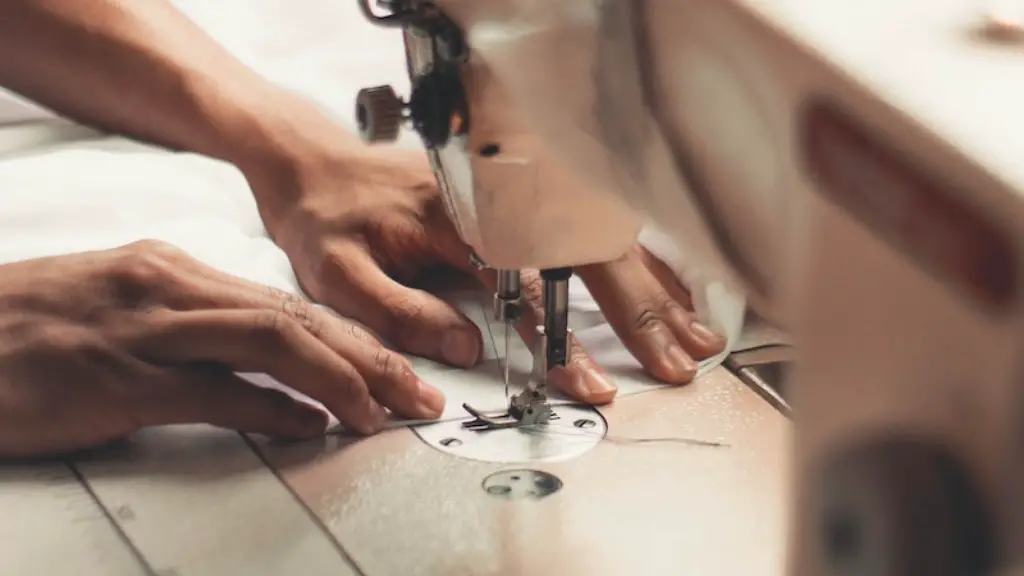Introduction
Mini sewing machines are a convenient and portable way to sew, repair and alter clothing and fabrics without the fuss of a regular-sized machine. They are often not as powerful as full-sized models, but they are great for small projects and are perfect for on-the-go sewing when travelling. In this article, we will discuss the basics of using a mini sewing machine, explain the features and help you decide if it is the right machine for you.
Understand the Machine
To understand how to use a mini sewing machine, one must first understand the parts of the machine. Every sewing machine includes a stitch selector, a pressure adjustment or tension adjustment, a treadle or hand lever, a bobbin winder, a needle plate, a needle threader and a bed plate. Depending on the model, it may also feature a light, feed dog, presser foot, and a horizontal or vertical spool holder.
Prepare Fabric and Thread
When preparing to sew using a mini sewing machine, make sure that the fabric is lay flat and secure it with pins or an adhesive. Choosing fabric scraps or extra fabric from a project will help to ensure that the fabric is secure. For thread, make sure to select a thread that is the same weight as the fabric that you are sewing with. A light weight thread is better suited for sewing lightweight fabric and a robust thread should be used for heavier fabrics.
Thread the Machine
In order to use a mini sewing machine, one must first thread the machine correctly. This requires winding the bobbin and threading the machine. To do this, follow the instructions included with the sewing machine as each machine differs. Then, insert the thread in the bobbin winder, place the bobbin in the shuttle, then insert the upper thread into the tension discs.
Using the Machine
Once the machine is threaded and prepared, it is time to start using the machine. At this point, the fabric should be ready with pins and the thread should be the right weight and colour. Start the machine by using the lever or treadle and adjust the pressure as needed. To ensure a consistent stitch, it is important to keep constant pressure on the fabric as the sewing machine moves across the fabric.
Stitch Selector
Most mini sewing machines feature a stitch selector- this allows the user to select different non-decorative stitches for different purposes. Commonly used stitches include a straight stitch for basic sewing, a blind stitch for sewing in hems, a zigzag stitch for stretchable fabrics and a buttonhole stitch for creating buttonholes.
Replace the Needle and Maintain
It is important to remember to replace the needle regularly as it wears out from use. Most mini sewing machines use needles size 8 or 9, although this may depend on the model. It is also important to remember to clean and maintain the machine regularly to guarantee a smooth and consistent sewing experience.
Pros and Cons of Mini Sewing Machines
When compared to regular sewing machines, mini sewing machines are more lightweight and portable- perfect for travelling and easy storage. However, mini sewing machines typically have limited functions and may not be suitable for complex projects. One must always read the manual before purchasing a mini sewing machine to ensure that it fits their sewing needs.
Type of Project
Before settling on a mini sewing machine, one must consider the type of project that they will be tackling. Quilting, embroidery and denim require specialized machines so a mini sewing machine might not be appropriate. However, mini sewing machines are perfect for basic repairs, alterations and light mending.
Machine Features
When comparing mini sewing machines, there are several different features that one should consider. The stitch length, screwdriver set and automatic needle threader are all features often included on mini sewing machines that can be helpful when sewing. Additionally, more powerful models may include features such as a drop feed and adjustable speed control.
Choosing the Right Machine
Choosing the right mini sewing machine depends on individual preference and sewing needs. Mini sewing machines are typically less expensive than regular sewing machines but offer fewer features. Understanding the features and reading reviews can help one decide which mini sewing machine is the best fit for their project. For many sewers, a mini sewing machine is the perfect tool for minor repairs, alterations and mending.
Upkeep and Maintenance
Keeping a mini sewing machine well maintained is essential for ensuring that it runs smoothly and produces quality results. Storing the machine in a dry area will help to protect it from dust, dirt and humidity that could cause rust or other problems. Ideally, the machine should be cleaned before use and regularly maintained and oiled according to the instruction guide provided.
Safety Precautions
When using a mini sewing machine, it is important to take safety precautions to ensure that the user is protected. Never use a machine with a frayed electric wire and always unplug the machine when not in use. Keep fingers away from the presser foot and be extra cautious while using the needle threader. Additionally, an adult should always be present when children are using a mini sewing machine.
Understanding Fabric Types
Every fabric requires different sewing techniques and a different kind of thread and needle. For instance, knitted fabrics are stretchy and require a special stitch pattern to prevent the stitches from ripping as the fabric stretches. Similarly, layered fabrics require a larger needle and longer stitch length to prevent the needle from snagging or breaking the fabric. Understanding these differences can help the user produce a better result when sewing.
Conclusion
Using a mini sewing machine is not as daunting a task as it may seem. Understanding the machine and the fabric used will help ensure that the user gets the desired results. With practice and patience, one can quickly become familiar with their mini sewing machine and easily be able to mend, alter and repair fabric.



